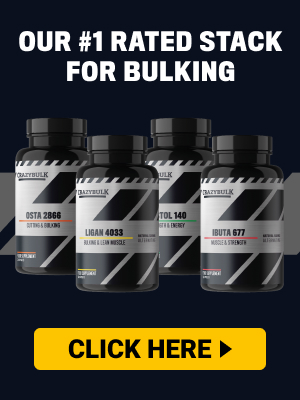Best Protein Sources for Vegans
Protein is present in many foods. So, it isn’t challenging to receive the daily quota from your daily diet. However, if you happen to be a vegan, it’s another matter. But that’s not to say that you cannot get a sufficient amount of protein from plant sources.
Many plants produce grains, seeds, and fruits with considerable protein. If you choose the right ingredients and follow an ideal diet, you won’t have problems getting the required daily amount.
Whether you are an average person or an elite athlete, a vegan protein diet can be enough to sustain your needs.
All you have to do is incorporate the right ingredients into your diet, and you won’t lack the macronutrient.
If you don’t have much idea from where to obtain a good amount of protein, continue reading. The following section will focus on all the protein-rich foods suitable for vegans.

Top Protein Sources for Vegans
A vast number of plant-based foods contain protein. However, the quantity of protein varies from one another.
So, consuming these ingredients may not be beneficial even if you eat large amounts. Take a look at the following list to know which foods you can eat as a vegan.
Soybean and Soy Products
Soybean contains a high number of proteins which means that it can provide you with essential amino acids. It’s also used to make several products such as edamame, tofu, soy chunks, tempeh, and soymilk.
Edamame is unripe soybeans that have a nutty flavor. You can steam, boil or add in stir-fries, soups, and stews. Tofu follows the cheese-making process and almost has a bland taste but it can be a meat substitute.
Tempeh is made of slightly fermented soybeans and shaped into blocks. These are versatile, and you can add them to many recipes. Soy chunks also resemble meat, and sometimes they are called poor man’s meat.
Soy-based products contain many other nutrients besides protein, such as iron, calcium, vitamins, fiber, folate, magnesium, and phosphorous.
Lentils
Do you like lentils? If yes, it’s a good thing because lentils also contain a considerable amount of protein and other nutrients.
Lentils are also delicious, and you can eat them in many different ways, including soups, stews, and salads.
Apart from being rich in protein, lentils also contain fiber which can promote good bacteria in the gut and improve colon health.
Lentils can also improve heart health and lower the risk of diabetes, some cancers, and body weight.
Nuts and Seeds
You have a vast number of ingredients under this category.
So, even if you don’t like one or the other type of nuts, you can eat some other varieties.
Nuts and seeds are rich in protein, with one ounce (28g) containing at least 5-7 grams depending on the variety. They also contain vitamins, iron, calcium, fiber, magnesium, selenium, phosphorous, and antioxidants.
Nuts, seeds, and nut products are versatile and delicious. You can add them to your favorite recipes and also munch them as snacks to receive adequate protein and energy throughout the day.
However, roasted varieties lose much of their nutrients. Besides, some products may also contain a high amount of sodium and other additives. So, try to buy raw and unadulterated products from well-known brands.
Healthy nuts and seeds include
- Almonds
- Cashew nuts
- Brazil nuts
- Walnuts
- Pistachios
- Pumpkin seeds
- Hemp seeds
- Ground linseed
- Peanuts
You can also eat nut butter if you can’t find the nuts as an alternative. However, choose well-known brands and also read the details on the labels carefully to make sure that the products contain one hundred percent nuts and no salt, sugar, or added oils.
Beans
You can also add beans to your diet. Beans contain multiple nutrients, including protein. The legumes are also yummy and versatile. Besides, there are several varieties, so you have many options.
You can enjoy beans as an item by themselves or include them with other ingredients to make incredible dishes. Whether you love the beans in soups, stews, curries, or salads, you will receive protein and enjoy the flavors.
Many beans contain protein and fiber, folate, iron, potassium, phosphorous, and manganese. Beans may help lower cholesterol levels, belly fat, and blood pressure and balance blood sugar levels.
Healthy beans with protein include black, pinto, kidney, and garbanzo (chickpeas), and you can enjoy them in many ways.
Ancient Grains
Several grains fall under this category, all of which are protein-rich sources. However, some varieties contain gluten while others are gluten-free.
If you aren’t keen on eating ingredients that have gluten, you can choose those that are gluten-free. Amaranth, spelt, teff, and quinoa are some ancient grains that contain a considerable amount of protein and other nutrients.
Out of these four, only spelt has gluten, and the other three are gluten-free. They all contain fiber, iron, manganese, magnesium, phosphorous, and complex fibers.
You can eat the grains the way you eat rice, include them in other dishes, or ground them to powder and use them as flour. They give a feeling of fullness, so the grains can be helpful to curb appetite and keep you satisfied.
Fruits and Vegetables
Almost all fruits and vegetables have protein, but the quantity varies from one to the other. But you receive plenty of nutrients no matter what you choose to eat.
The following are some veggies and fruits which contain a good amount of protein:
Vegetables
- Asparagus
- Artichokes
- Spinach
- Broccoli
- Potatoes (all)
- Brussels Sprouts
- Sweet Corn (though a grain, it can count as a veggie too)
- Kale
- Cauliflower
Fruits
- Bananas
- Blackberries
- Nectarines
- Cherimoyas
- Mulberries
- Guavas

Fruits and veggies are healthy and tasty, and you can eat them any time of the day. You can mix them and create salads, roast, steam, fry, or make smoothies.
Green Peas
A legume, green peas contain a certain amount of protein. The peas are versatile as you can eat them cooked or raw. The amount of protein per one cup of cooked peas (160g) is 9 grams which makes it more than one cup of milk.
Apart from protein, green peas have multiple nutrients, including vitamins A, C, K, fiber, copper, folate, zinc, iron, magnesium, phosphorous, thiamine, and B vitamins.
You can enjoy peas in soups, stews, salads, stir-fries, and rice dishes. You can also roast peas and eat them as snacks.
Nutritional Yeast
It has a cheesy-nutty flavor, and there are different ways to eat it. Nutritional yeast comes from Saccharomyces cerevisiae yeast, but it’s a deactivated variety.
The yeast has a high amount of protein, with the 16 grams yeast providing 8 grams. It also provides at least 3 grams of fiber from the same quantity.
You can sprinkle nutritional yeast on various items or add it to different dishes according to preference.
Nutritional yeast also has copper, manganese, magnesium, zinc, and B vitamins.
Seitan
If you don’t mind gluten and want a meaty flavor in your food that has protein, seitan is a great choice. Many vegans and vegetarians use it to replace meat in their diet.
It comes from wheat gluten, a protein. It’s almost identical to meat in appearance and texture when cooked. 100 grams of seitan contains at least 25 grams of protein. Hence, it’s one of the best protein sources from plants.
Also called wheat meat or wheat gluten, seitan also boasts of selenium, calcium, iron, and phosphorous.
It’s a versatile ingredient, and you can cook it in several ways per your liking.
But if you have gluten-related problems, then seitan is not an option for you.
Spirulina
Spirulina is a blue-green alga that has a vast quantity of protein. Just two spoons of spirulina (14g) can provide 8 grams of protein.
Spirulina is also rich in copper, iron, potassium, riboflavin, magnesium, and manganese.
Some initial studies suggest that spirulina also contains anti-inflammatory properties. Besides, it may also improve heart health, lower blood pressure and boost the immune system.
However, more studies need to be done to know if spirulina can offer other health benefits.
Mycoprotein
It’s a non-animal variety of protein extracted from a fungus called Fusarium venenatum.
Mycoprotein offers at least 15 grams of protein from 100 grams serving. It’s often used as a meat replacement in delicacies such as fillets, cutlets, patties, and veggie burgers.
Some people may, however, suffer from allergies, so it’s essential to keep that in mind. Sometimes, some products may also contain egg whites. Hence, if you don’t consume any animal-based ingredients, check the product label thoroughly.
Ezekiel Bread
Sprouted whole grains and legumes are the ingredients used for making Ezekiel bread. They include barley, millet, soybeans, lentils, wheat, and spelt.
Mixing legumes and grains enhances a bread’s “amino acid profile.” So, you can receive a lot of nutrients.
Ezekiel bread provides more protein than several other types of bread, as two slices give at least 8g of protein.
Due to the combination of legumes and grains, the bread can also boast folate, vitamins, beta-carotene, and fiber.
Other Plant Protein Sources
Besides the above, you can also add the following to your diet:
- Avocado
- Oats and oatmeal
- Chia seeds
- Wild rice
- Sorghum
- Buckwheat
- Brown rice
With so many options, it’s not likely for you to lack protein. You can include the ingredients with the highest protein content for regular consumption and add the others on alternative days.
Just make sure to eat the protein-rich food first before anything so that you can obtain as much protein as possible.
You can also snack on nuts, seeds, fruits, and veggies throughout the day to keep away hunger and calories.
Following the diet along with the right exercises can help you stay fit and also gain lean muscle faster.
Try to consume at least 2.2 grams protein per bodyweight per day if you are planning to gain lean muscle mass.




